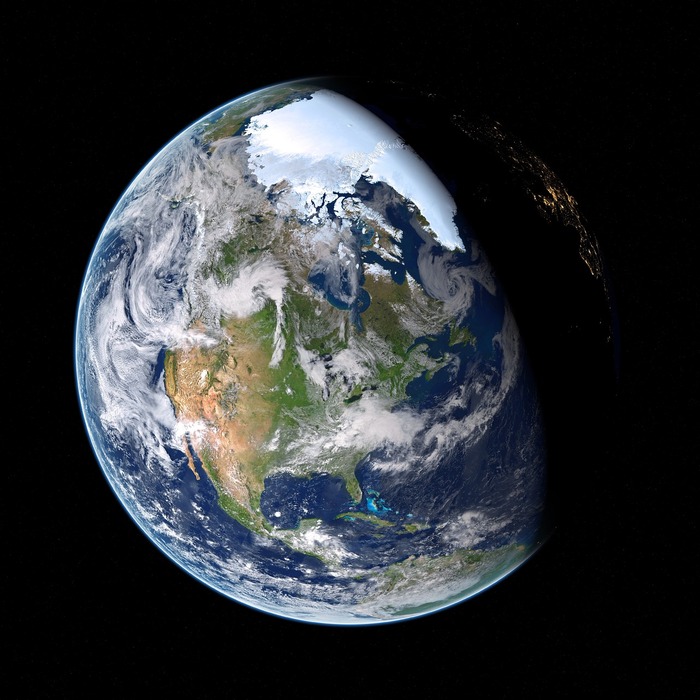For a long time the authorized source to know what was the origin of the Earth and the universe were the sacred scriptures.
All religions have developed their own mythology to explain the origin of everything and that includes the planet we live on.
In general, everything exists because at some point some god or goddess wanted it that way.
As a generic explanation it serves to get out of trouble, the problem is when we are interested in the specific details.
For example, when was the Earth formed?
If we read the Genesis account, God made creation in a week, so the universe, Earth, and life were formed within very little time difference.
The archbishop and professor at Trinity College Dublin James Ussher (1581-1656), drawing on the Old Testament, the ages of the Biblical patriarchs and their genealogy,
He ruled that the Earth had formed in the year 4004 before the common era, specifically on the afternoon of October 23.
Previously, other authors, including the astronomer Johannes Kepler (1571-1630), had attempted similar calculations, but reached different results.
However, many findings seemed to contradict that the Earth was just over 6,000 years old.
The appearance of remains of extinct fauna, such as dinosaurs, in strata in which modern human or animal remains are never found seems to indicate a great temporal separation.
If man had lived with dinosaurs, we would find representations in rock art, or tools made from dinosaur remains, something that has never happened.
This seems to contradict the account that life and the universe were created several days apart.
Therefore, accurately estimating the age of the Earth was a full-fledged scientific challenge.
Clair Patterson (1922-1995) was the son of a postal worker who was born in a small town in Iowa (USA), in the middle of a sea of ears of corn.
His mother, very interested in education, gave him a chemistry set as a child, which awakened his vocation.
In 1944 he graduated in Chemistry from the University of Chicago and worked on the Manhattan Project, responsible for the manufacture of the atomic bomb.
After the war, he began his doctorate with a project to measure the presence of lead isotopes in meteorites.
There are chemical elements that have various forms, depending on the number of neutrons that exist in the nucleus.
There is the particularity that some of these isotopes can be unstable and decompose over time.
Therefore,
a measure of the composition of different isotopes can give us an idea of the age of the sample.
This is the rationale for the carbon 14 analysis that is used to date historical samples.
Since in 14,000 years the amount of carbon 14 in the original sample will have halved, this helps us date the sample.
In the case of geological studies, more stable isotopes are used, in which their half-life spans millions of years.
This methodology is called radiometric dating.
In the case of geological studies, more stable isotopes are used, in which their half-life spans millions of years.
This methodology is called radiometric dating.
In the case of geological studies, more stable isotopes are used, in which their half-life spans millions of years.
This methodology is called radiometric dating.
Probably the use of isotope analysis could give us an exact measure of the age of the Earth.
But this poses a problem.
Geological phenomena on Earth such as plate tectonics, hydrothermals, erosion, or human activity itself may have interfered with the planet's original isotopic composition.
Therefore, the Earth has erased the traces of its origin.
But all was not lost.
Most models of the origin of the solar system indicated that we were the result of the condensation of matter from a disk of dust and gas called a protosolar nebula.
This implies that all the planets have the same age, and most interestingly, in this process not only planets were formed, but also asteroids, such as those in the belt between Mars and Jupiter,
and smaller matter that sometimes falls to Earth in the form of a meteorite.
According to this model, meteorites would be like time capsules from the beginning of the solar system.
If the theory were true, the measurement of lead isotopes from different meteorites should give similar radiodatings and this would indicate the age of the solar system.
Thanks to this brilliant insight by Clair Patterson, we now know that the Earth is approximately 4.5 billion years old.
The Judeo-Christian creation week thing falls a bit short.
Thanks to this brilliant insight by Clair Patterson, we now know that the Earth is approximately 4.5 billion years old.
The Judeo-Christian creation week thing falls a bit short.
Thanks to this brilliant insight by Clair Patterson, we now know that the Earth is approximately 4.5 billion years old.
The Judeo-Christian creation week thing falls a bit short.
JM Mulet is Professor of Biotechnology.
Patterson vs. Big Oil
Not only because we know the age of the Earth we have to recognize Patterson's work.
Thanks to his interest in the study of lead, he discovered that a layer of compounds of this element appeared in recent soil samples from different parts of the world, due to its use as an additive in gasoline.
Patterson warned of the danger of this practice and advocated for its elimination, which earned him a smear campaign by the main oil companies.
But in the end, sometimes, science wins out, and if there's unleaded gasoline in service stations, it's partly thanks to Patterson's efforts.
Subscribe to continue reading
Read without limits
Keep reading
I'm already a subscriber





/cloudfront-eu-central-1.images.arcpublishing.com/prisa/BTRKCSHAY5F7PIBHF4CTKZAEPI.jpg)





/cloudfront-eu-central-1.images.arcpublishing.com/prisa/KMEYMJKESBAZBE4MRBAM4TGHIQ.jpg)



